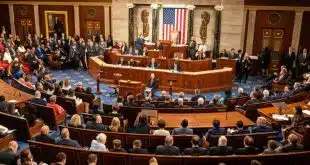Findings from an overlooked Federal Reserve Board report from last March portend that the possible cuts in debit card interchange as a result of a major court decision last month could be even bigger than many observers initially thought.
In the report, the Fed said that authorization, clearing, and settlement (ACS) costs for debit card issuers subject to the price controls mandated by the Durbin Amendment in 2010’s Dodd-Frank Act averaged 5 cents per transaction in 2011, versus 7.6 cents in 2009. That 34% reduction could become a major focus of courtroom briefs and arguments as a retailer-led lawsuit against the Fed’s rule implementing the Durbin Amendment plows through the appeals process.
The new focus on ACS costs is a result of the July 31 decision by U.S. District Judge Richard J. Leon in Washington, D.C., to throw out the Fed’s Durbin rule. Leon said Federal Reserve governors did not follow the letter of the law in setting their price cap for affected issuers, those with $10 billion or more in assets, nor did their final regulations for debit card transaction routing conform with the statute.
The cap in the Fed’s final rule, issued in June 2011, is 21 cents plus 0.05% of the sale plus another 1 cent possible for fraud control. Leon said the Fed considered factors not permitted by the Dodd-Frank statute, which calls for regulated debit card issuers to receive “reasonable and proportional” interchange, which is paid by merchants, relative to their ACS costs. The Fed last week filed notice that it will appeal Leon’s decision.
Leon did not explicitly spell out what the cap should have been. He indicated, however, that the Fed’s own “Alternative 1” that it floated during the Durbin rule-making process in late 2010 more closely jibed with Congress’s will than the approximately 24-cent cap it ultimately approved. Alternative 1 called for a 7-cent “safe harbor” with a cap that might have gone up from there to a maximum of 12 cents.
That original 7-to-12-cent proposal received many mentions in the tide of press coverage a few weeks ago when Leon issued his decision. Few, however, noted that the Fed itself had already found that the ACS costs that undergirded its deliberations back in 2010 had declined considerably since then.
The new numbers may have received little attention because the Fed issued them at the same time it announced its decision not to change its Durbin Amendment regulations. Dodd-Frank requires the Fed to assess the debit market every two years and adjust its regulations if it determines there is a need.
“The world dismissed the study … because the Fed wasn’t going to act,” says payments consultant Eric Grover, principal of Minden, Nev.-based Intrepid Ventures.
A 34% drop in ACS costs in just two years is notable, but part of it might be explained by the fact that the respondent bases for the two surveys were not identical. The Fed’s March findings are based on a survey that asked companies to provide data for 2011, and that study included more issuers (including all 131 issuers subject to the price cap) than the first survey, which asked industry companies to provide data for 2009.
Still, other studies and financial reports from processors confirm that computing, telecommunications, and most related transaction expenses in the payment card industry have been declining steadily for decades. Grover, in fact, says he would be surprised if average ACS costs for the top debit card issuers—Bank of America, Wells Fargo, Chase, and perhaps a few others—even approach 5 cents. While not claiming inside knowledge, he says: “Their costs could be 2 cents, close to zero.”
The Fed’s survey results are more nuanced than a straight nickel might suggest because the report breaks down ACS costs by debit card type—signature, PIN, and prepaid—as well as by four volume tiers. A few banks with $10 billion or more in assets but small debit card portfolios had average blended ACS costs of as much as 74.6 cents, versus only 4.7 cents for issuers with big debit portfolios. ACS costs for PIN-debit transactions from a high-volume issuer averaged only 2.9 cents. The same issuer’s average ACS costs for signature and prepaid card transactions were 5.1 cents and 11.7 cents, respectively.
If the Fed loses its appeal, Grover expects the cap ultimately might be ratcheted down to the low end of Alternative 1 and possibly even lower. “If the Fed is forced to do what Leon has instructed it to do, the best that banks could possibly hope for is the Fed could rationalize 7 cents,” he says. “At the bottom end, it wouldn’t be surprising at all to see a number of a couple of cents.”
The National Retail Federation, one of the plaintiffs in the suit against the Fed, could not make an executive available on Monday, but a spokesperson noted a statement the trade group made in its newsletter after the Fed’s survey came out. “This confirms that the Fed set the cap far too high, and is evidence that it should be reduced to something in line with the actual cost as intended by Congress,” NRF senior vice president and general counsel Mallory Duncan said in that statement. “It’s disappointing that the Fed continues to rely on a flawed interpretation of the law and isn’t providing full relief. We are hopeful the courts will ultimately correct this.”
Grover says he’s no fan of the amendment named for its chief sponsor, U.S. Sen. Richard Durbin, D-Ill. “Durbin didn’t want to be reasonable and fair, he wanted to punish the banks,” he says. But the bigger issue is the executive branch carrying out its Constitutional mandate, which is to do what Congress tells it, he adds. “If you don’t like legislation,” he says, “go back to Congress and fix it.”




